Matsushima is one of the many scenic locations referenced during Bashō’s journey in Oku no Hosomichi. Said to have “the most splendid scenery” in the land, the following excerpt from Barnhill’s translation of Oku no Hosomichi describes how the location appeared to Bashō in the story.[i]
“Here are islands upon islands of limitless number, some towering to the heavens, others prostrate before the waves. Some are doubled together while others are enfolded in three layers. Those to the left are set off from each other; to the right they interconnect. Some islands are carried on the backs of others and some are embraced, like children loved by their grandparents. The pines are deep green, their branches bent in the wind as if spontaneously trained into twisted form. The whole scene has the fathomless beauty of a lady exquisitely arrayed.”[ii]
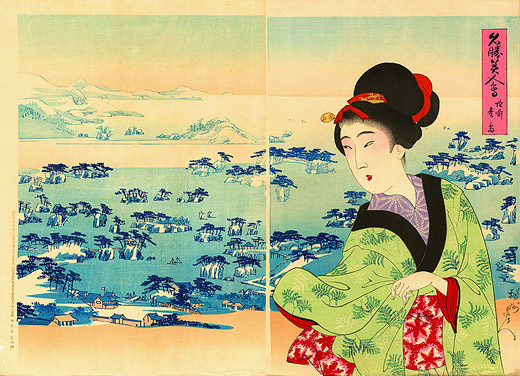
Here is a map showing a present day look at where Matsushima is
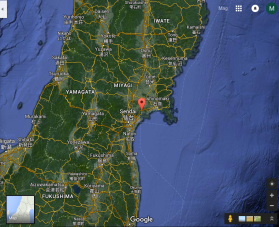
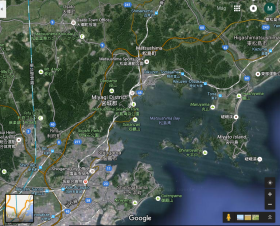
Today, Matsushima is still known for its beauty, and is ranked as one of Japan’s three most scenic views.[iii] Consisting of 260 pine-covered islands scattered throughout the Matsushima bay, its stunning scenery attracts visitors all year round.[iv]

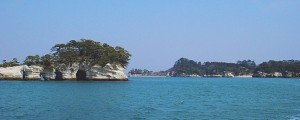
One aspect of Matsushima that is referenced in Oku no Hosomichi as being particularly beautiful is the moon rising over it. Seemingly almost symbolic, Bashō contemplates the moon rising over the islands before beginning his journey.[v] Once there, he comments on the rising moon reflecting on the sea, and then seeks out lodging. In his room, he describes looking out the window as filling him with mystery and wonder, and his companion Sora writes a poem –
Matsushima—
borrow the wings of the crane,
cuckoo
matsushima ya / tsuru ni mi o kare / hototogisu (Sora)[vi]
Bashō then states that the beauty was so great that he had to give up on trying to write about it.[vii]
Whether he is talking about the moon, or the beauty of Matsushima in general isn’t completely clear, but the scene of the moon over Matsushima seems to be generally appreciated, as artists have depicted it as well.
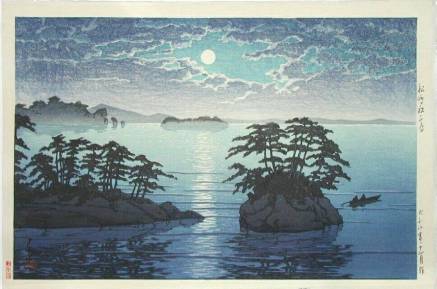
Image Sources
http://www.vianegativa.us/2011/03/matsushima
http://www.japan-guide.com/e/e5100.html
http://www.japan-guide.com/e/e5101.html
http://www.ukiyoe-gallery.com/detail-hasui211.htm
Maps from google maps
Works Cited
[i] Matsuo, Bashō, and David Landis. Barnhill. Basho’s Journey: The Literary Prose of Matsuo Basho. New York, NY: State University of New York Press, 2005, 60
[ii] Matsuo, Bashō, and David Landis. Barnhill. Basho’s Journey: The Literary Prose of Matsuo Basho. New York, NY: State University of New York Press, 2005, 60
[iii] “Matsushima.” Travel Guide. Accessed March 08, 2016. http://www.japan-guide.com/e/e5100.html
[iv] “Matsushima Area.” Japan National Tourism Organization. Accessed March 08, 2016. http://www.jnto.go.jp/eng/location/regional/miyagi/matusima.html
[v] Matsuo, Bashō, and David Landis. Barnhill. Basho’s Journey: The Literary Prose of Matsuo Basho. New York, NY: State University of New York Press, 2005, 49
[vi] Matsuo, Bashō, and David Landis. Barnhill. Basho’s Journey: The Literary Prose of Matsuo Basho. New York, NY: State University of New York Press, 2005, 61
[vii] Matsuo, Bashō, and David Landis. Barnhill. Basho’s Journey: The Literary Prose of Matsuo Basho. New York, NY: State University of New York Press, 2005, 61
Contributor: Magdalena Machula
(Edited by Elle Marsh)

You must be logged in to post a comment.